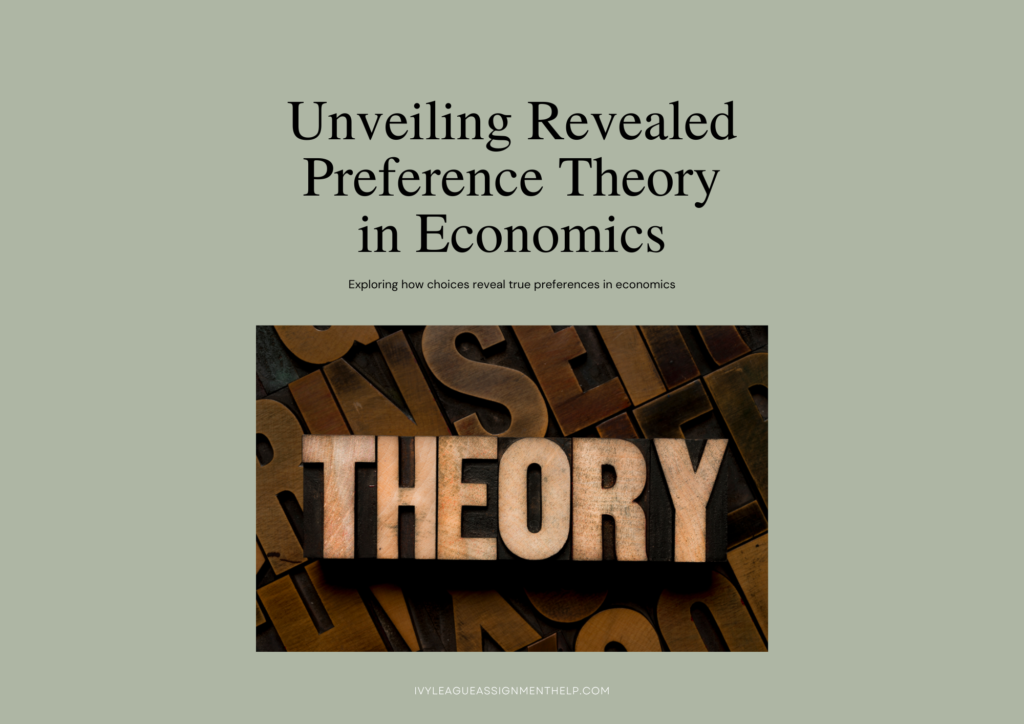Understanding Revealed Preference Theory
Key Takeaways:
- Revealed preference theory helps understand consumer choices based on observed behavior.
- The theory relies on axioms like WARP and SARP to explain preferences.
- It’s used in consumer choice analysis, market demand estimation, and policy making.
Understanding Revealed Preference Theory
Definition of Revealed Preference Theory
Revealed preference theory (RPT) is a method of analyzing consumer behavior by observing their purchasing decisions. It posits that the preferences of consumers can be revealed through their choices, given the constraints they face, such as income and prices.

Importance of Revealed Preference Theory
RPT is crucial because it:
- Provides Empirical Insights: Uses actual consumer data for analysis.
- Avoids Speculation: Focuses on observed behavior rather than theoretical assumptions.
- Informs Policy: Helps policymakers understand the real-world impact of economic decisions.
Core Concepts of Revealed Preference Theory
Basic Axioms
RPT relies on certain axioms that form its foundation. These include assumptions about consumer rationality and consistency in choice behavior.
Weak Axiom of Revealed Preference (WARP)
The Weak Axiom of Revealed Preference states that if a consumer chooses a bundle of goods A over another bundle B when both are affordable, then they should not choose B over A if A is still affordable. This axiom ensures consistency in consumer choices.
Strong Axiom of Revealed Preference (SARP)
The Strong Axiom of Revealed Preference extends WARP by considering sequences of choices. It states that if a consumer reveals a preference for bundle A over B and B over C, then A should be preferred over C if all are affordable. This axiom strengthens the consistency requirement.
Applications of Revealed Preference Theory
Consumer Choice Analysis
RPT is used to analyze consumer choices and predict future behavior. By observing past purchasing decisions, economists can infer preferences and forecast demand.
Market Demand Estimation
Market demand estimation benefits from RPT as it relies on actual consumer choices. This method helps businesses and policymakers understand how changes in prices and income levels affect overall demand.
Policy Making and Welfare Analysis
Policymakers use RPT to assess the impact of economic policies on consumer welfare. By analyzing revealed preferences, they can design interventions that improve social welfare and economic efficiency.
Advantages of Revealed Preference Theory
Empirical Relevance
RPT is grounded in empirical data, making it highly relevant for practical applications. It avoids the pitfalls of theoretical models that may not accurately reflect real-world behavior.
Non-Speculative
Since RPT is based on observed behavior, it avoids speculative assumptions about consumer preferences. This makes its findings more reliable and applicable.
Limitations and Criticisms
Assumption of Rationality
RPT assumes that consumers are rational and consistent in their choices. However, behavioral economics has shown that real-world behavior often deviates from this rational model.
Limited Scope
The theory may have limited scope in explaining complex consumer behaviors influenced by psychological, social, and cultural factors. It focuses primarily on observable choices and may miss underlying motivations.
Real-World Examples
Consumer Spending Patterns
RPT helps analyze consumer spending patterns in various markets. For example, by observing how consumers allocate their budgets among different goods, economists can infer preferences and predict future spending behavior.
Economic Policy Decisions
RPT is used to inform economic policy decisions. For instance, when designing tax policies, governments analyze revealed preferences to understand how changes in taxation impact consumer spending and welfare.
Examples of Revealed Preferences in Different Markets
| Market | Revealed Preference Example |
|---|---|
| Groceries | Preference for organic produce over conventional produce |
| Technology | Preference for high-end smartphones over budget models |
| Transportation | Preference for private cars over public transportation |
Historical Data Analysis Using Revealed Preference
| Year | Market | Revealed Preference Insights |
|---|---|---|
| 2020 | Housing | Shift towards suburban homes over urban apartments |
| 2021 | Retail | Increase in online shopping preferences over in-store shopping |
Related Questions
How does revealed preference theory differ from utility theory?
Revealed preference theory differs from utility theory in that it relies on observed consumer behavior rather than hypothetical satisfaction levels. While utility theory involves subjective measures of utility, RPT focuses on actual choices made under budget constraints.
What are the main criticisms of the revealed preference theory?
The main criticisms of RPT include its assumption of rationality and limited scope. Critics argue that it may not fully capture the complexity of consumer behavior, which can be influenced by psychological, social, and cultural factors.
How is the revealed preference theory used in economics?
Revealed preference theory is used in economics to analyze consumer behavior, estimate market demand, and inform policy decisions. It provides a framework for understanding how consumers make choices based on their observed purchasing behavior.
Frequently Asked Questions
What is revealed preference theory?
Revealed preference theory is a method of analyzing consumer behavior by observing their actual purchasing decisions. It posits that consumer preferences can be inferred from their choices, given their budget constraints.
How is revealed preference theory applied in market analysis?
In market analysis, revealed preference theory is used to predict demand, understand consumer preferences, and forecast how changes in prices or income levels will affect market behavior. It relies on empirical data from consumer purchases to draw conclusions.
What are the axioms of revealed preference?
The axioms of revealed preference include the Weak Axiom of Revealed Preference (WARP) and the Strong Axiom of Revealed Preference (SARP). These axioms ensure consistency and rationality in consumer choices.
How does the revealed preference theory address consumer behavior?
Revealed preference theory addresses consumer behavior by focusing on actual choices made by consumers. It assumes that these choices reveal true preferences and can be used to understand and predict future behavior.
What are some real-world applications of revealed preference theory?
Real-world applications of revealed preference theory include analyzing consumer spending patterns, estimating market demand, and informing economic policy decisions. It helps businesses and policymakers understand consumer behavior and design strategies accordingly.
